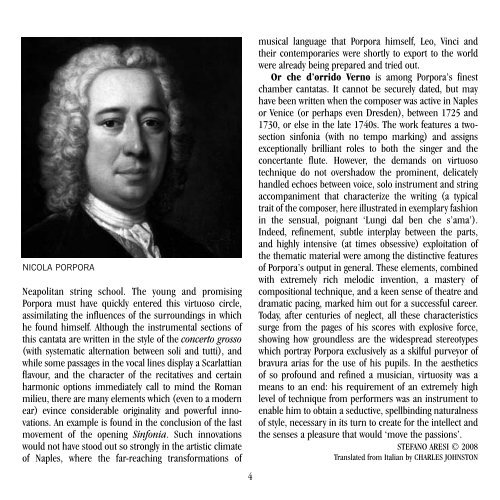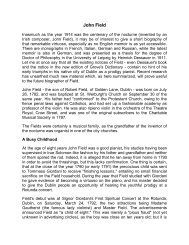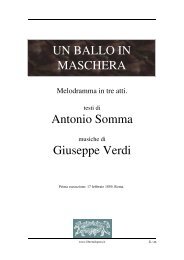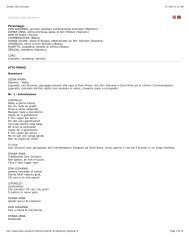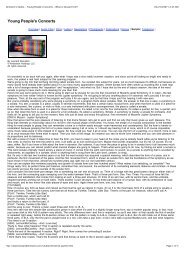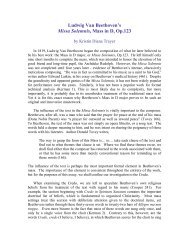Porpora Or sì m'avveggio, oh Amore - Fulmini e Saette
Porpora Or sì m'avveggio, oh Amore - Fulmini e Saette
Porpora Or sì m'avveggio, oh Amore - Fulmini e Saette
Create successful ePaper yourself
Turn your PDF publications into a flip-book with our unique Google optimized e-Paper software.
NICOLA PORPORA<br />
Neapolitan string school. The young and promising<br />
<strong>Porpora</strong> must have quickly entered this virtuoso circle,<br />
assimilating the influences of the surroundings in which<br />
he found himself. Although the instrumental sections of<br />
this cantata are written in the style of the concerto grosso<br />
(with systematic alternation between soli and tutti), and<br />
while some passages in the vocal lines display a Scarlattian<br />
flavour, and the character of the recitatives and certain<br />
harmonic options immediately call to mind the Roman<br />
milieu, there are many elements which (even to a modern<br />
ear) evince considerable originality and powerful innovations.<br />
An example is found in the conclusion of the last<br />
movement of the opening Sinfonia. Such innovations<br />
would not have stood out so strongly in the artistic climate<br />
of Naples, where the far-reaching transformations of<br />
4<br />
musical language that <strong>Porpora</strong> himself, Leo, Vinci and<br />
their contemporaries were shortly to export to the world<br />
were already being prepared and tried out.<br />
<strong>Or</strong> che d’orrido Verno is among <strong>Porpora</strong>’s finest<br />
chamber cantatas. It cannot be securely dated, but may<br />
have been written when the composer was active in Naples<br />
or Venice (or perhaps even Dresden), between 1725 and<br />
1730, or else in the late 1740s. The work features a twosection<br />
sinfonia (with no tempo marking) and assigns<br />
exceptionally brilliant roles to both the singer and the<br />
concertante flute. However, the demands on virtuoso<br />
technique do not overshadow the prominent, delicately<br />
handled echoes between voice, solo instrument and string<br />
accompaniment that characterize the writing (a typical<br />
trait of the composer, here illustrated in exemplary fashion<br />
in the sensual, poignant ‘Lungi dal ben che s’ama’).<br />
Indeed, refinement, subtle interplay between the parts,<br />
and highly intensive (at times obsessive) exploitation of<br />
the thematic material were among the distinctive features<br />
of <strong>Porpora</strong>’s output in general. These elements, combined<br />
with extremely rich melodic invention, a mastery of<br />
compositional technique, and a keen sense of theatre and<br />
dramatic pacing, marked him out for a successful career.<br />
Today, after centuries of neglect, all these characteristics<br />
surge from the pages of his scores with explosive force,<br />
showing how groundless are the widespread stereotypes<br />
which portray <strong>Porpora</strong> exclusively as a skilful purveyor of<br />
bravura arias for the use of his pupils. In the aesthetics<br />
of so profound and refined a musician, virtuosity was a<br />
means to an end: his requirement of an extremely high<br />
level of technique from performers was an instrument to<br />
enable him to obtain a seductive, spellbinding naturalness<br />
of style, necessary in its turn to create for the intellect and<br />
the senses a pleasure that would ‘move the passions’.<br />
STEFANO ARESI © 2008<br />
Translated from Italian by CHARLES JOHNSTON


